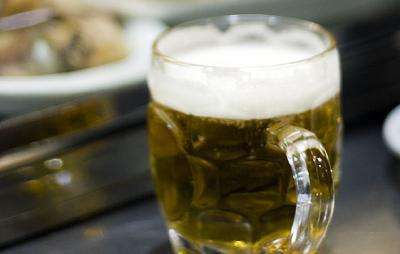Where does my beer come from?

Researchers at the University of Seville (Spain) have developed a technique based on chemical patterns for identifying the country of origin of beer. The content of iron, potassium, phosphates and polyphenols is found to be determining components. German, Spanish and Portuguese beers have been detected with 99% accuracy thanks to the model.
"Beers can be differentiated from one another according to their country of origin by using parameters linked to raw materials, such as water (metals and anions) and the type of hop (polyphenol content)," tells SINC José Marcos Jurado, chemist at the University of Seville and director of the study that aims to find out the country of origin of beers.
Using a statistical test, the first step is to select the variables that differentiate beers the most. These include the amount of aluminium, iron or strontium for example. A mathematic analysis is then applied to do away with the parameters that fail to describe the origin of beers very well. The result is a model based on the content of iron, potassium, phosphorous, phosphates and polyphenols.
Jurado points out that "the differences can seem very subtle but the model is capable of detecting the relationship between these chemical descriptors and the country of origin of beers." The last step involves applying support vector machines – a set of algorithms that recognises data patterns.
The researchers have used this technique to differentiate between beers produced in Germany, Spain or Portugal and they have managed to identify the country of origin with 99.3% accuracy, according to the results published in the Food Control journal.
Jurado clarifies that "this type of study can be extended to include other geographic areas. However, we have to remember that by increasing the number of beer types, obtaining an accurate model becomes more complicated. Differentiating should be dealt with by taking large geographical areas into account and then considering possible groupings in smaller areas."
An important identification for the food industry
According to the researcher, authenticity and geographical identification studies are "very important" for the food industry "given that they allow the differentiating characteristics of a product to be established. This can have an impact of their marketing."
Twenty brands of German, Czech and British beer are registered on the DOOR database (Database of Origin and Registration) of the European Commission of Agriculture and Rural Development, which brings together Protected Geographical Indication products. Studies like this one can offer innovative techniques for confirming the country of origin of such drinks.
More information: Food Control 23: 258-262, 2012. Doi:10.1016/j.foodcont.2011.07.029


















